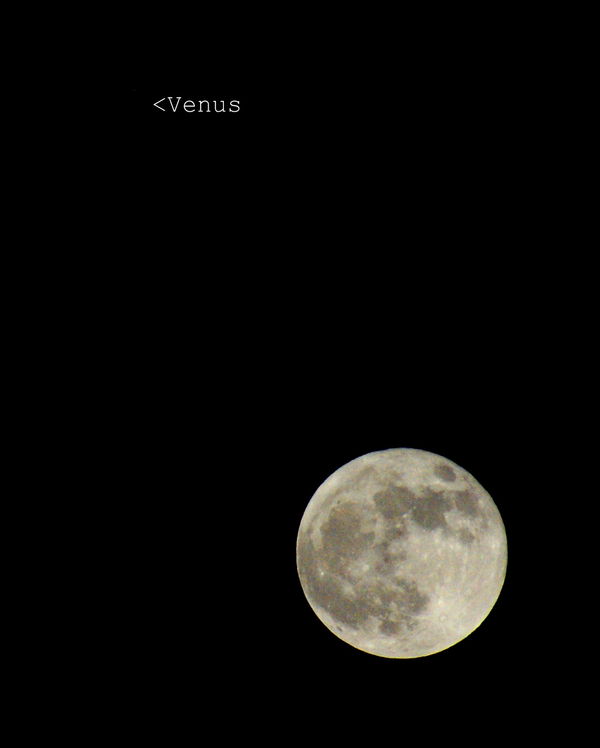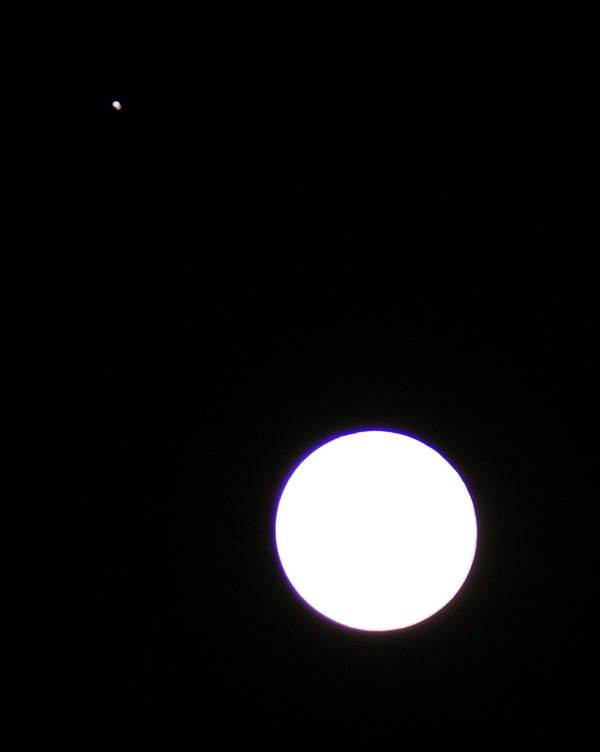98% moon and venus (sort-of)
Nov 28, 2012 20:01:48 #
I didn't get a chance to take pics of the full moon last night so I got it tonight, with Venus in the upper left corner....not very good, but it was hand-held and the planet is barely visible. The only ones I got that clearly showed Venus had the moon totally blown out and were unusable and I couldn't figure out how to only get Venus brighter without getting everything else overexposed. It was my first attempt at getting two different types of celestial bodies in the same shot. Never tried a long exposure of stars yet, but will next spring. Update...looking at the post, you can't see Venus, only it's approximate position...sorry!

Nov 29, 2012 10:31:48 #
Here's the overexposed one that had Venus

Nov 29, 2012 23:52:25 #
Are you sure that was Venus? I've been watching it over the last few nights and my Star Walk (real-time star chart) says it was Jupiter. It was exceptionally bright and I thought it was Venus at first.
Nov 30, 2012 10:19:43 #
Maybe you're right...it's one of the planets anyways...I just thought it would have looked neat if the image came out better. How does one go about taking a pic of totally different brightness of objects? Is it even possible???
Nov 30, 2012 13:53:21 #
Since there is a significant difference in brightness, you'll have to use bracketing or multiple exposures to get images with the best exposure for each. Then you'll have to merge the best images with post-processing software. Get a shot first with the moon exposed correctly. I start with ISO 100, shutter speed at 1/ISO (for an ISO of 100, that would be 1/100 sec.), and aperture at f/11. For a full moon well above the horizon, you may have to decrease aperture to f/16, or make the shutter speed faster. For the planet, use a slower shutter speed or increased aperture so you capture more light. Keep the ISO low to reduce sensor noise. You'll definitely need a tripod because any movement will blur a star or planet.
If you want to reply, then register here. Registration is free and your account is created instantly, so you can post right away.

